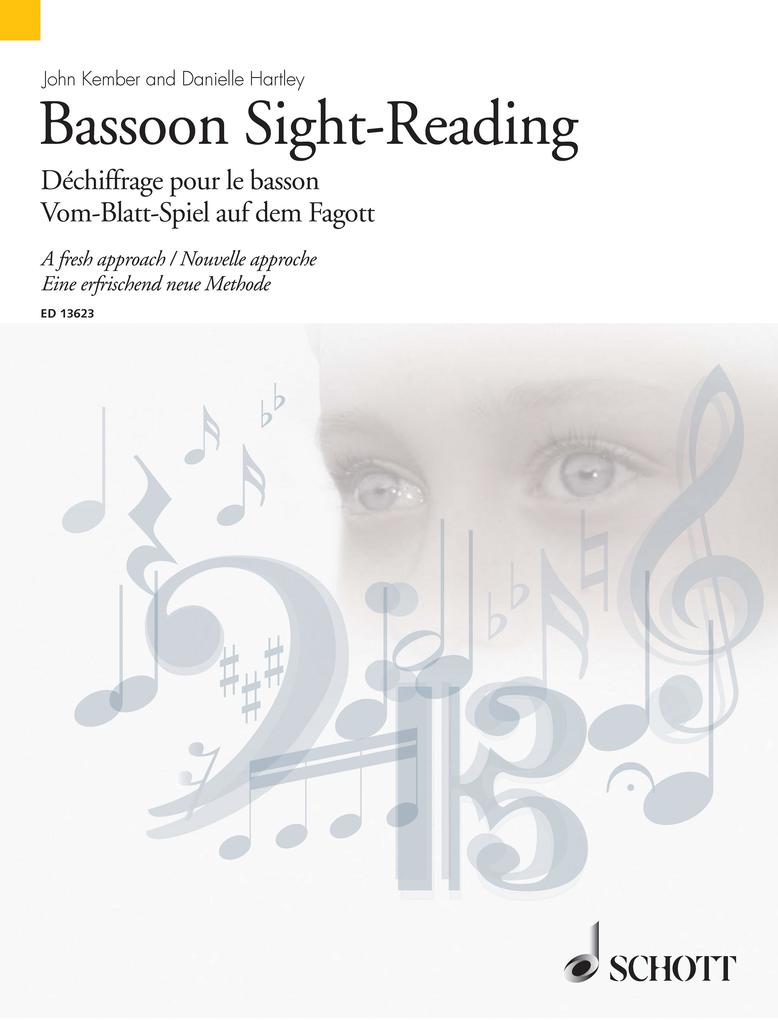
Sofort lieferbar (Download)
Sight-reading is an important aspect of making music and should in some form become a regular part of a student's routine each time they play their instrument. Regular sight-reading helps the pupil to gain greater confidence when approaching any new piece of music for the first time.
Schott's Sight-Reading books aims to establish the habit early in every student's learning process and the emphasis is on providing idiomatic tunes and structures for the specific instruments rather than sterile sight-reading exercises. Starting from very easy pieces with familiar shapes and rhythms, the range of notes, keys and rhythms gradually develops. In addition to this, each section of the books concludes with duets and accompanied pieces allowing the student to gain experience of sight-reading within the context of ensemble playing. Accompaniment exercises can be found at the end of the piano books.
Schott's Sight-Reading books aims to establish the habit early in every student's learning process and the emphasis is on providing idiomatic tunes and structures for the specific instruments rather than sterile sight-reading exercises. Starting from very easy pieces with familiar shapes and rhythms, the range of notes, keys and rhythms gradually develops. In addition to this, each section of the books concludes with duets and accompanied pieces allowing the student to gain experience of sight-reading within the context of ensemble playing. Accompaniment exercises can be found at the end of the piano books.
Inhaltsverzeichnis
Preface - To the pupil: why sight-reading? - Section 1: Notes G-C - Solos - Duets Accompanied pieces - Section 2: Notes C up to G - Solos - Duets - Accompanied pieces - Section 3: Range G-G - Solos - Duets - Accompanied pieces - Section 4: Range d-A - Solos - Duets - Accompanied pieces - Section 5 :Range B to B - Solos - Duets - Accompanied pieces - Section 6: Range: from B to Middle C - Solos - Duets - Accompanied pieces - Section 7: Revision in times and keys - Swing rhythms - Solos - Duets - Accompanied pieces - Section 8: Range low B to high G - Solos - Duets - Accompanied pieces - Section 9: Range: B to high A - Solos - Duets - Accompanied pieces - Section 10: Range B to high E - Double sharps and flats - Solos - Duets - Accompanied pieces - Section 11: All keys and all styles - Full range of notes and tonalities Solos - Duets - Accompanied pieces
Mehr aus dieser Reihe
Produktdetails
Erscheinungsdatum
03. September 2020
Sprache
englisch, deutsch
Seitenanzahl
108
Dateigröße
1,02 MB
Reihe
Schott Sight-Reading Series
Autor/Autorin
Danielle Hartley, John Kember
Verlag/Hersteller
Kopierschutz
mit Wasserzeichen versehen
Family Sharing
Ja
Produktart
EBOOK
Dateiformat
PDF
ISBN
9783795799854
Entdecken Sie mehr
Bewertungen
0 Bewertungen
Es wurden noch keine Bewertungen abgegeben. Schreiben Sie die erste Bewertung zu "Bassoon Sight-Reading" und helfen Sie damit anderen bei der Kaufentscheidung.

































